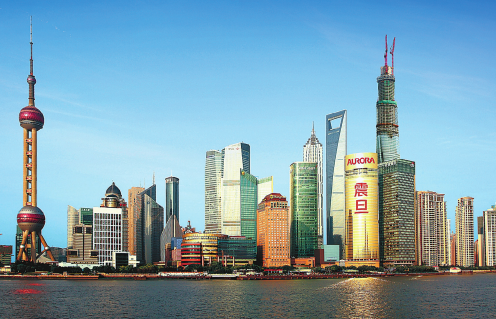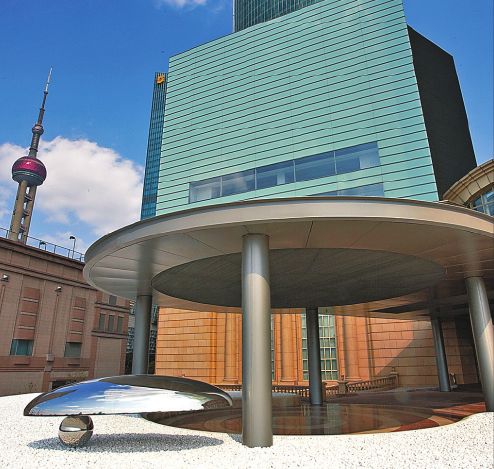
CHINA DAILY
The golden AURORA building, located on the bank of the Huangpu River, is considered a landmark of Shanghai.

CHINA DAILY
AURORA Museum located in Shanghai is known as "a precious jewel box of Chinese culture."
Visitors to Shanghai have a new must-see attraction–the AURORA Museum.
Located on the eastern bank of the Huangpu River, the museum was unveiled in 2013.
Housing a wide array of exhibits, including Buddha statues, jade artifacts, and porcelain, the museum is another effort of AURORA Group Chairman Chen Yung-tai to promote traditional Chinese culture.
It was designed by renowned Japanese architect Tadao Ando and the exhibits are from Chen's personal collection. A program to expand the facility is underway and will be finished in 2015.
"There are many museums in China, but ours is different in that we have set up an ancient relic research center in cooperation with Peking University," Chen said.
"In addition to studies, we offer art and antique lovers opportunities to examine those artifacts we have."
Dedicated to preserving and promoting traditional culture, Chen hopes the museum can serve as a venue for local people to learn more about Chinese art and culture and as "a landmark on the cultural landscape in Shanghai".
Chen's bond with Shanghai was forged two decades ago. He visited the city for the first time in 1993 when the Pudong area was still underdeveloped and transportation across the Huangpu River was inconvenient, featuring only ferries, two channels and one bridge.
Bold and farsighted, Chen was then confident about Pudong's future and purchased a piece of land without hesitation to build the AURORA Plaza as the headquarters of his group on the mainland.
Founded in Taiwan in 1965, Chen's group consisted of two listed companies--AURORA Corp and Huxun Corp, which sells office automation equipment, office furniture, and electronic products for office use.
After decades of development, the group is well established in Taiwan, occupying a 40 percent market share in the island's office automation market.
It has also been forging ahead rapidly on the Chinese mainland since it first set up a headquarter in Shanghai. Now AURORA has more than 1,000 shops and over 6,000 employees across the Straits.
The group frequently wins prizes for its innovative products. In 2012, it took home a silver prize by The International Design Excellence Awards in the US, the iF Design Award in Germany as well as the China Red Star Design Award and the China Design Award.
While expanding his business empire, he is becoming increasingly fond of Chinese culture and antiques and contributing to their protection.
In 1999, Chen returned 18 heads of arhat statues free of charge to the Cishou Temple in Shanxi province. In 2009, he sent three bodhisattva statues made of cast bronze back to the Donghe Temple in Taipei and another 154 pieces of Buddha-related artifacts to a Buddha Memorial in Kaohsiung in 2011.
In addition to donating antiques, he built an art museum in Taipei in 2003 to showcase thousands of exhibits he has collected in the past decades including jade objects, bronze wares, and Buddhism-related artifacts.
The museum's staff also conducts studies in collaboration with the Center of Ancient Civilizations at Peking University and offers online lectures on traditional Chinese culture.
In 2010, his AURORA Group built a 3,000-square meter pavilion at the Shanghai Expo to showcase jade artworks.
The exhibition that integrated the latest technology and Chinese people's age-old cult of jade attracted more than 2.3 million visitors from around the world in six months.
In addition to his affinity for traditional Chinese culture, Chen also remains dedicated to charity due to his childhood experiences.
He was born into a poor family in Taiwan in 1936 and had to take on various parttime jobs to finish his education.
Guided by a philosophy that places importance on giving back to society, Chen has also long lent a hand to those in need.
Since 2009, his group has sponsored the Xinhua Compassion Education Foundation to help excellent students from poverty-stricken families finish their high-school education.
We recommend:
